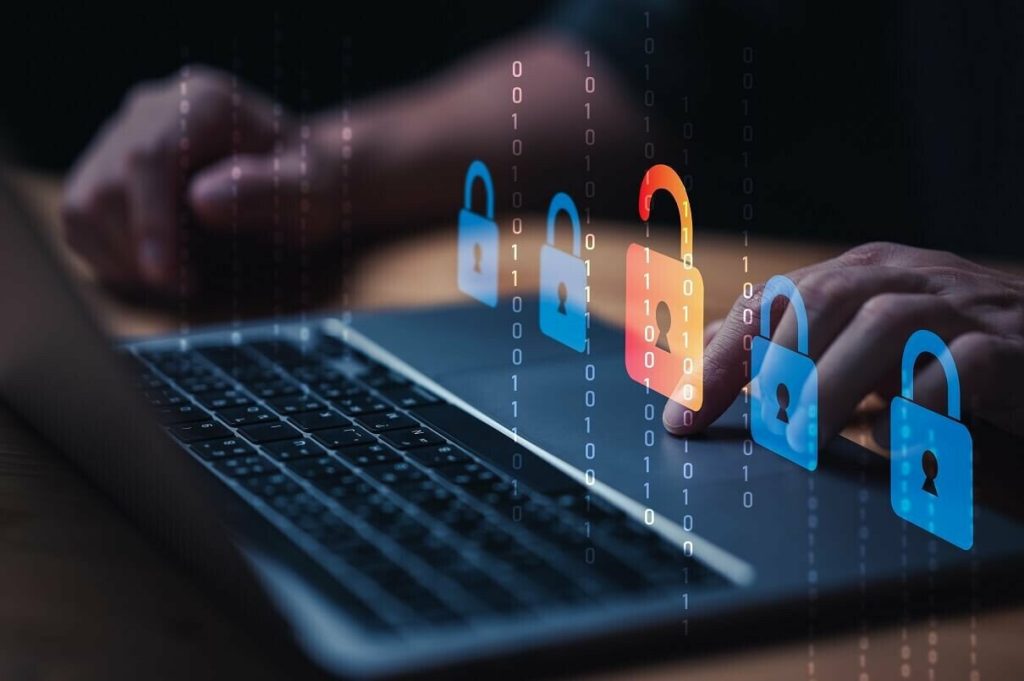Introduction
Blockchain technology has revolutionized many sectors by offering decentralized, transparent, and secure solutions. However, as blockchain applications expand across industries such as finance, healthcare, and supply chain management, regulators worldwide are struggling to catch up with the rapid pace of innovation. The decentralized nature of blockchain presents unique challenges for governments, financial institutions, and regulatory bodies who are tasked with ensuring that the technology is used safely, ethically, and in compliance with existing laws.
In this article, we will explore the key regulatory challenges blockchain technology faces, the implications of these challenges for businesses and users, and how regulatory frameworks are evolving to address these issues.
1. Lack of Clear and Consistent Regulations
1.1 Jurisdictional Uncertainty
Blockchain operates across borders, making it difficult for regulators to establish clear authority over blockchain-based activities. Different countries have different approaches to blockchain regulation, which creates a patchwork regulatory environment. Some countries, like Switzerland and Singapore, are relatively blockchain-friendly, while others, such as China, have imposed strict bans on certain aspects of blockchain, especially cryptocurrency trading.
- Example: In the United States, blockchain and cryptocurrencies are regulated by various agencies, including the Securities and Exchange Commission (SEC), Commodity Futures Trading Commission (CFTC), and the Financial Crimes Enforcement Network (FinCEN). The lack of a unified regulatory framework can lead to confusion for businesses and investors.
- Challenge: The international nature of blockchain means that compliance with multiple jurisdictions is necessary, creating uncertainty for companies operating globally. The absence of consistent regulatory frameworks can hinder innovation and lead to regulatory arbitrage, where businesses move to jurisdictions with less stringent rules.
1.2 Lack of Legal Definitions
Blockchain technology is still relatively new, and many aspects of it lack clear legal definitions. This is particularly evident in the regulatory treatment of cryptocurrencies, smart contracts, and decentralized finance (DeFi).
- Example: The SEC has struggled to define whether cryptocurrencies are classified as commodities or securities. This ambiguity impacts how Initial Coin Offerings (ICOs) and token sales are treated. Without a clear legal framework, businesses in the blockchain space risk violating securities laws unintentionally.
- Challenge: A lack of legal definitions creates confusion and prevents companies from knowing whether their activities are compliant with existing regulations. This also creates significant legal risks for businesses and investors in the blockchain space.
2. Anti-Money Laundering (AML) and Know Your Customer (KYC) Compliance
2.1 Anonymity of Blockchain Transactions
One of the defining features of blockchain is its ability to provide pseudonymous or anonymous transactions, which raises concerns over its use in illegal activities such as money laundering, terrorism financing, and fraud. The Financial Action Task Force (FATF) has issued guidelines that encourage countries to implement Know Your Customer (KYC) and Anti-Money Laundering (AML) regulations for crypto exchanges and other blockchain platforms.
- Example: The FATF’s “Travel Rule” requires cryptocurrency exchanges to collect and share information about the sender and recipient of cryptocurrency transactions. This rule was implemented to combat money laundering, but many blockchain platforms, particularly decentralized exchanges (DEXs), do not have the infrastructure to comply with these regulations.
- Challenge: The pseudonymous nature of transactions on public blockchains makes it difficult for regulators to track and monitor illicit activities. This presents a challenge for ensuring that blockchain technologies are not used for money laundering or other criminal activities.
2.2 Implementation of KYC/AML on Decentralized Platforms
Decentralized platforms (such as DeFi) and non-custodial wallets often do not require users to complete KYC or AML procedures. While this decentralization is a key advantage for privacy-conscious users, it creates a significant hurdle for regulatory compliance.
- Example: The rise of DeFi protocols that facilitate lending, borrowing, and trading without intermediaries complicates the enforcement of KYC and AML regulations. The decentralized nature of DeFi makes it difficult for regulators to impose the same compliance standards they apply to centralized exchanges.
- Challenge: How can regulators enforce KYC/AML requirements on decentralized platforms where there are no central authorities to hold accountable? The decentralized and pseudonymous nature of these platforms makes compliance difficult, leading to a potential regulatory loophole.
3. Consumer Protection and Investor Safeguards
3.1 Volatility and Fraud Risks
The blockchain ecosystem, particularly the cryptocurrency market, has been notoriously volatile. While this volatility presents opportunities for high returns, it also exposes investors to significant risks. Moreover, the rise of scams, fraudulent ICOs, and rug pulls in the DeFi space raises concerns about consumer protection.
- Example: In 2021, several high-profile scams and rug pulls took place within the DeFi space, where developers abandoned projects after attracting significant investment from users. These types of frauds have resulted in millions of dollars in losses for unsuspecting investors.
- Challenge: The lack of consumer protection laws and mechanisms to safeguard against fraud means that investors in the blockchain space often have little recourse when they lose funds. This increases the need for regulatory frameworks that can help prevent fraud, ensure fair market practices, and protect investors.
3.2 Token Classification and Investor Protections
Many blockchain-based assets, particularly tokens and cryptocurrencies, do not fall into clear legal categories. For instance, are they securities or commodities? This lack of classification creates uncertainty about the level of regulatory oversight they are subject to, and whether investors are entitled to protections like those offered by traditional securities laws.
- Example: The SEC has taken action against companies like Ripple Labs (the creator of XRP) for allegedly conducting an unregistered securities offering. However, many in the blockchain community argue that XRP should be treated as a commodity, not a security, creating an ongoing debate about token classifications.
- Challenge: Without clear classifications, regulators struggle to provide protections for investors or enforce consistent rules. The lack of investor safeguards in many blockchain-based projects makes it difficult for consumers to evaluate the legitimacy of different offerings.
4. Taxation of Blockchain Transactions
4.1 Tax Reporting for Cryptocurrency Transactions
Tax authorities around the world are grappling with how to tax transactions involving cryptocurrencies and blockchain-based assets. In many countries, cryptocurrencies are considered taxable assets, but the complexities of reporting transactions on public blockchains create significant challenges for both tax authorities and users.
- Example: In the United States, the IRS has issued guidance stating that cryptocurrency is taxable as property, and any capital gains from its sale or exchange must be reported. However, tracking the cost basis for cryptocurrencies, especially when they are traded across different platforms, can be extremely difficult for users.
- Challenge: The anonymous and pseudonymous nature of blockchain transactions makes it hard for tax authorities to monitor and enforce tax compliance. Without proper reporting systems in place, individuals and businesses may underreport their crypto holdings, which could result in tax evasion.
4.2 Cross-Border Taxation Issues
Since blockchain transactions can be conducted across borders, tax authorities also face challenges in enforcing taxation rules for international crypto transactions.
- Example: If a user in the United States exchanges cryptocurrency for a token in a decentralized exchange in Switzerland, the transaction may not be easily traceable. Determining which jurisdiction has the right to tax these transactions can become complex, especially when users engage in cross-border transactions that span multiple tax jurisdictions.
- Challenge: Cross-border tax enforcement for blockchain transactions requires international collaboration. However, the lack of global consistency in crypto tax regulations creates confusion for users and challenges for tax authorities.

5. Intellectual Property (IP) and Copyright Issues
5.1 Smart Contracts and IP Protection
Smart contracts, which are self-executing contracts with the terms of the agreement directly written into code, are becoming widely used in various industries, including digital content, finance, and real estate. However, these contracts raise questions about intellectual property (IP) protection and copyright enforcement.
- Example: The use of NFTs (Non-Fungible Tokens) in the art world has sparked debates over the ownership and copyright of digital artworks. The owner of an NFT might not always hold the intellectual property rights to the digital art it represents, which creates confusion about IP ownership.
- Challenge: How can regulators ensure that the intellectual property rights of creators are respected in blockchain transactions? The lack of legal clarity regarding the relationship between NFTs, smart contracts, and IP rights creates challenges for both creators and buyers.
Conclusion: The Future of Blockchain Regulation
The regulatory challenges facing blockchain technology are complex and multifaceted. While the decentralized and borderless nature of blockchain presents significant opportunities for innovation, it also creates challenges for regulators tasked with ensuring compliance with existing laws and protecting consumers.
As blockchain technology continues to evolve, regulators will need to collaborate globally to create consistent frameworks that address the unique features of blockchain while balancing innovation and consumer protection. A clearer regulatory landscape, combined with international cooperation on issues such as taxation, AML/KYC compliance, and investor protection, will be essential for fostering a secure and sustainable blockchain ecosystem.
Regulation will likely continue to evolve, but as the blockchain space matures, a more cohesive and comprehensive set of rules will emerge, helping to drive growth while ensuring that risks are effectively mitigated.
















































